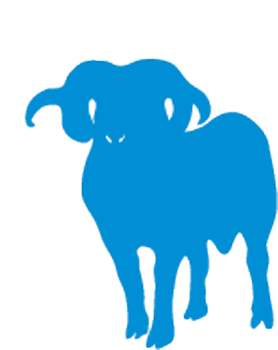|
|
| (One intermediate revision by the same user not shown) |
| Line 1: |
Line 1: |
| − | The important nematode infections of sheep are mostly refined to the gastrointestinal system. Clinical problems are more commonly seen in lambs than in adult sheep, though this varies with they type of nematode. They can cause substantial economic loss both in mortality and in reduced growth rate of lambs.
| + | {{frontpage |
| | + | |pagetitle = Sheep Nematodes |
| | + | |pagebody = |
| | + | |contenttitle = Content |
| | + | |contentbody = |
| | + | <big><b> |
| | + | <br> |
| | + | <categorytree mode=pages>Sheep Nematodes</categorytree> |
| | + | <br> |
| | + | <br> |
| | + | </b></big> |
| | + | |logo=sheep-logo2.png}} |
| | | | |
| − | ==Gastrointestinal Nematodes==
| |
| − | [[Image:Nematodirus ruminant.jpg|thumb|right|150px|''Nematodirus'' from ruminant faeces - Joaquim Castellà Veterinary Parasitology Universitat Autònoma de Barcelona]]
| |
| − | Many worm species occur in the gastrointestinal tract of sheep, though relatively few are of importance in the UK. Primary pathogens include:
| |
| | | | |
| − | {| style="width:75%; height:200px" border="1"
| |
| − |
| |
| − | !
| |
| − | !'''Abomasum'''
| |
| − | !'''Small Intestine'''
| |
| − | !'''Large Intestine'''
| |
| − |
| |
| − | |-
| |
| − | |'''Primary Pathogens in the UK'''
| |
| − | |
| |
| − | *''[[Ostertagia|Ostertagia (Teladorsagia) circumcincta]]''
| |
| − |
| |
| − | *''[[Haemonchus contortus]]''
| |
| − | |
| |
| − | *''Trichostrongylus'' species
| |
| − |
| |
| − | *''[[Nematodirus|Nematodirus battus]]''
| |
| − | |
| |
| − | |-
| |
| − | |'''Worms that contribute to ovine PGE, but are rarely primary pathogens in the UK'''
| |
| − | |
| |
| − | *''[[Trichostrongylus axei]]''
| |
| − | |
| |
| − | *other ''Nematodirus'' species
| |
| − |
| |
| − | *''[[Cooperia]]'' species
| |
| − |
| |
| − | *''Bunostomum'' species
| |
| − |
| |
| − | *''[[Strongyloides]]'' species
| |
| − | |
| |
| − | *''[[Oesophagostomum]]'' species
| |
| − |
| |
| − | *''Chabertia'' species
| |
| − |
| |
| − | *''[[Trichuris]]'' species
| |
| − | |}
| |
| − |
| |
| − |
| |
| − | *All the above worms belong to the '''Trichotrongyloidea''' except:
| |
| − | **''Bunostomum'' (a hookworm)
| |
| − | **''Oesophagostomum''
| |
| − | **''Chabertia'' (Strongyloidea)
| |
| − | **''Strongyloides'' (Rhabditoidea)
| |
| − | **''Trichuris'' (a whipworm)
| |
| − | *Although many different genera and species of worms may be found in the gastro-intestinal tract of sheep there are only three distinct disease manifestations within the [[Parasitic Gastroenteritis|PGE]] complex:
| |
| − | **Ostertagiosis and Trichostrongylosis
| |
| − | **Nematodirosis
| |
| − | **Haemonchosis
| |
| − |
| |
| − | ==== Succession of Gastrointestinal Worm Species ====
| |
| − | The relative number of worms of each species changes during the grazing season. The succession of species is due to differences in:
| |
| − | *Ability of L3 to overwinter
| |
| − | *Fecundity between worm species
| |
| − | *Rate of development from egg to L3 stage
| |
| − | *Special requirements of ''Nematodirus''
| |
| − |
| |
| − | ==Test yourself with the Small Ruminant Nematodes Flashcards==
| |
| − |
| |
| − | [[Small_Ruminant_Nematodes_Flashcards|Small Ruminant Nematodes Flashcards]]
| |
| | | | |
| | | | |
| | [[Category:Sheep Parasites]] | | [[Category:Sheep Parasites]] |
| − | [[Category:To_Do_-_Parasites]]
| |
